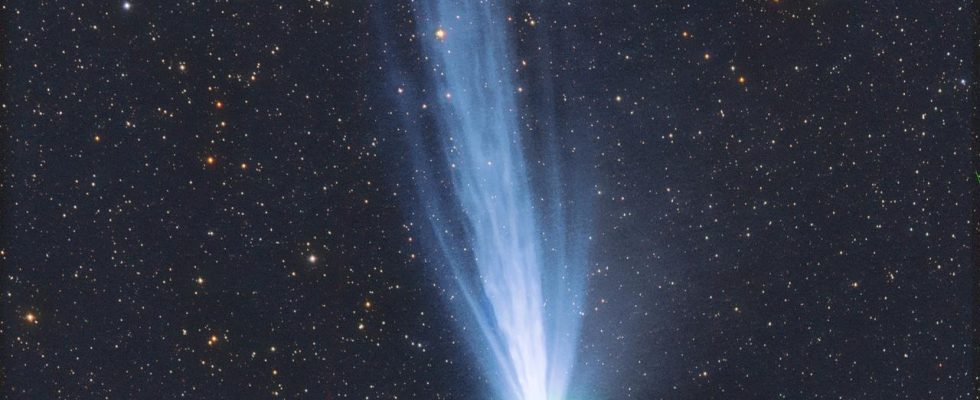With a little luck, it will shine in Hesse’s sky: Comet 12P/Pons-Brooks is passing through our solar system and will even be visible to the naked eye in the coming weeks.
No, the name has nothing to do with a foreign language dictionary: 12P/Pons-Brooks is a comet that can create a rare spectacle in the sky over Hesse. It was discovered by Jean-Louis Pons in 1812 and again by William Robert Brooks in 1883. This is where the name comes from.
The comet comes so close to the sun about every 71 years that it can be seen in the evening sky under favorable conditions. The last time this happened was in 1954.
Above the horizon towards the west-northwest
Currently, 12P/Pons-Brooks can often only be seen with binoculars because, although the comet’s luminosity exceeds many stars, layers of haze on the horizon prevent it from being clearly visible in the sky. This is what happens with the ARD educational channel ARD alpha explained. At the end of twilight, if you look to the west or northwest, you might be lucky enough to see the comet directly above the horizon in a cloudless sky.
What is a comet?
Some comets are just as old as our solar system – around 4.5 billion years. Its core consists of chunks of matter and dust held together by ice. When a comet comes close to the sun, the ice evaporates and takes particles from the nucleus with it, which then appear as a long tail. The closer a comet gets to the sun, the larger its tail becomes.
“It’s a real Easter comet,” says Sabine Frank, the star park representative from the Fulda district. According to her own statements, she has already seen 12P/Pons-Brooks through binoculars. “You have to have a little patience,” she says and advises letting your eyes wander and scanning the horizon with binoculars. A trained eye is helpful.
“If it’s not a point, but a green splash,” the comet has been discovered, says Frank. In principle, it is also possible to see the comet without binoculars. But that requires some practice.
Easy to see in the Kellerwald, Vogelsberg and the Rhön
The star park representative reports that the Wasserkuppe or Maulkuppe in the Rhön, the Vogelsberg and the Kellerwald are good places to watch the natural spectacle. The darker the places, the easier it is to see stars or comets in the sky.
It is expected to reach its greatest brightness in the second half of April. Then it reaches its perihelion, the point of its orbit closest to the Sun. The comet is then on its way to the inner solar system to follow its narrow orbit around the sun.
Mid-April is too late for observations
But that is too late for all stargazers in Hesse. Star park guide Frank explains: “Every day it stays bright longer – we in the northern hemisphere are basically turning away from the comet.” By the time it was dark enough to see the comet, it would already be somewhere else.
However, not all supposed sightings of comets, satellites and space debris are actually such. Last – at Re-entry of a battery pack from the ISS space station into the earth’s atmosphere at the beginning of March – there were also some in Hesse who believed they had filmed the spectacle in the sky. But that wasn’t it, it was mostly just airplanes and their contrails in the special light of the evening sky.

